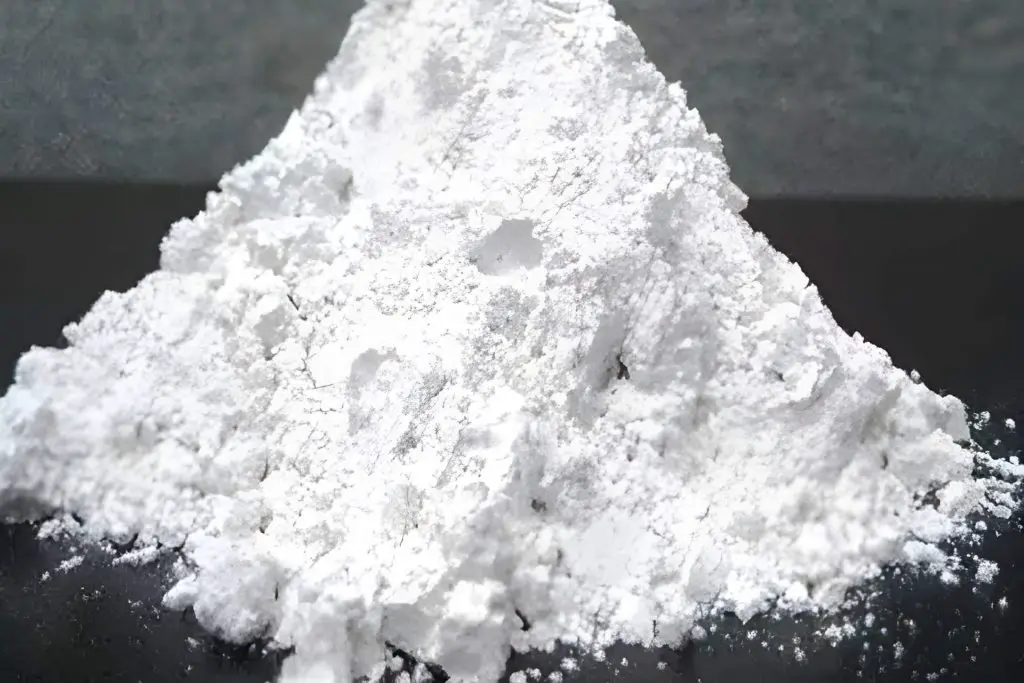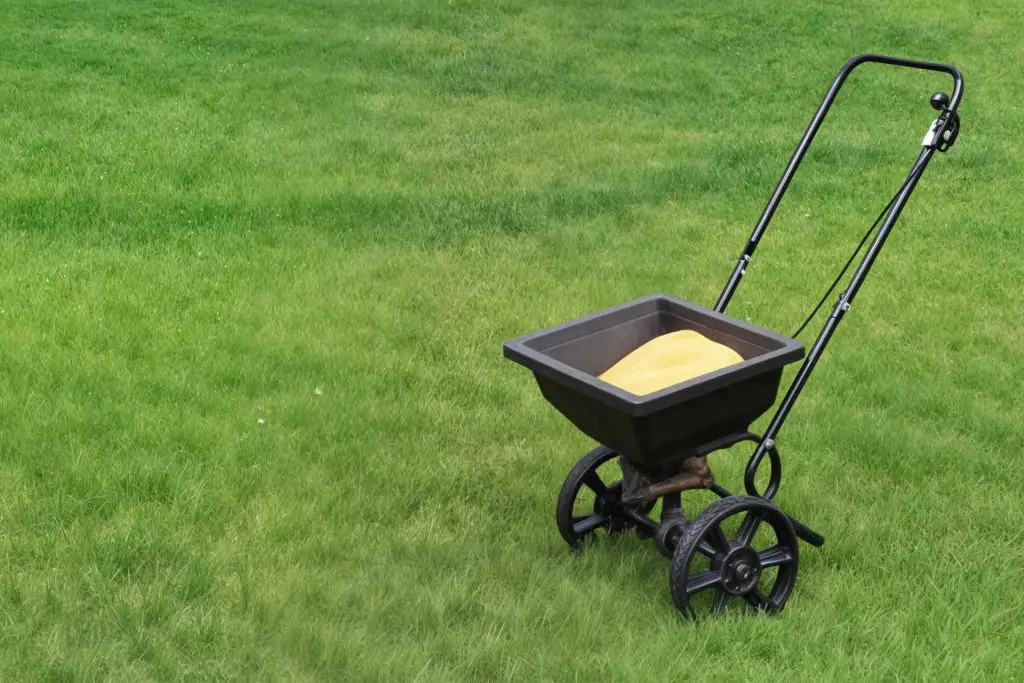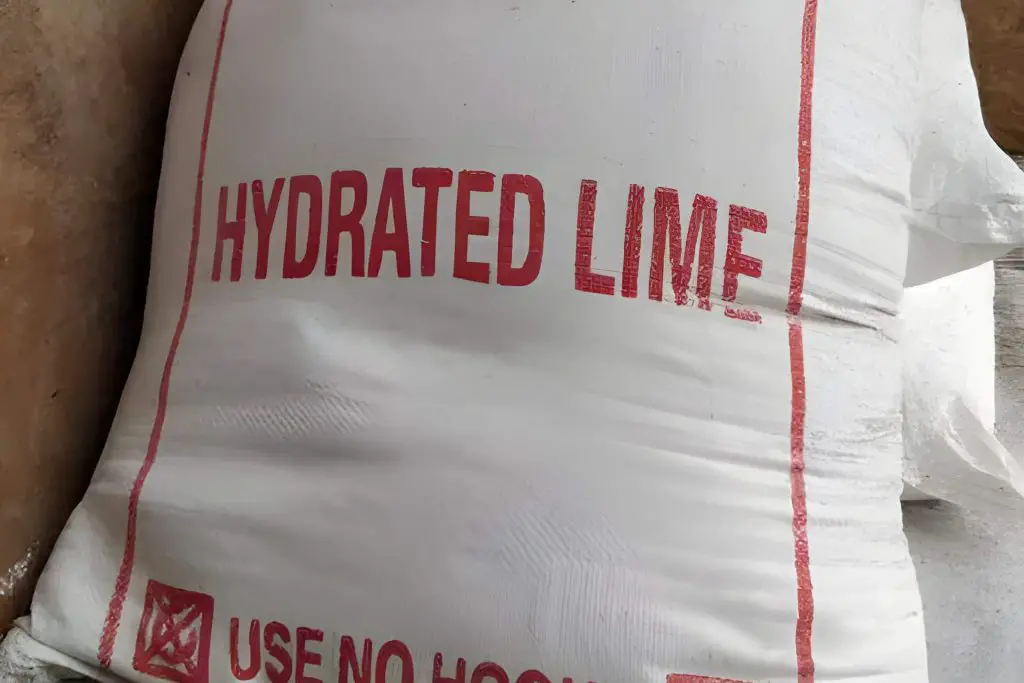What Are the Benefits of Adding Lime to Your Lawn?
Keeping your lawn healthy and looking its best can depend on a number of factors. For the grass to strive it needs adequate moisture, oxygen, and a supply of nutrients. However whilst there might be plenty of moisture and nutrients in your soil the roots of the grass can sometimes struggle to absorb them in the necessary quantities to keep the grass blades strong.
Acidic soil is a primary cause of poor grass growth as it hinders root development and restricts nutrient uptake. Over time, soil can become acidic from rainfall and or shifts in its nutrient balance. Fortunately, treating acidic soil is a straightforward process. Through the application of lime, you can not only neutralize the acidity but also experience additional benefits that should encourage a lush, green lawn.
Lime is a soil conditioner that is used to control soil acidity. Lime neutralizes the effects of acids from nitrogen fertilizer, acid rain, and slurry. When lime is added to soil, it increases the pH level and makes the soil less acidic. This can improve plant growth and increase crop yields. Lime also helps to improve the structure of clay soils and increases the water-holding capacity of sandy soils.
What is lime?

Lime is an inorganic compound that is found in nature that contains calcium carbonate and magnesium carbonate and can be used as a soil amendment. These two minerals are important for plant growth because they help reduce soil acidity. Too much acidity in the soil can be harmful to plants, so adding lime can help them grow better. Inorganic compounds like lime are essential for healthy plant growth.
Types of Lime
Lime comes in several forms, the most common of which being powdered/ground limestone and a liquid amendment. Lime may also be found in various forms. Each variety provides grass with the calcium carbonate that is necessary for its development. Limestone is a mineral that is essential for both plants and animals, and it also plays a crucial role in preventing soil erosion.
Quick Lime
Caustic quick lime shouldn’t be used with fertilizers. It transforms soil acids into calcium hydroxide. This reduces acidity. Too much quick lime might create a coating on the soil’s surface. This might inhibit roots from reaching the nutrients in the soil.
Slaked Lime / Liquid Lime
Slaked lime is a high-quality lime combination with microscopic particles that dissolve fast in water. Slaked lime adds moisture and decreases soil acidity. It works well on vegetable gardens with pH values over 7.0. Speed and convenience of usage make liquid lime popular.
Dolomitic Lime
Dolomitic lime (dolomite lime) is high magnesium content making it preferable to calcitic lime. Magnesium is the core of plant chlorophyll, which absorbs light. Low magnesium levels together with iron deficiency may result in low chlorophyll levels, limiting plant growth. Magnesium also activates plant enzymes.
What is soil acidity?
Soil acidity is a measure of the number of hydrogen ions (H+) in soil. Soils with a high number of H+ ions are considered to be acidic, while soils with a low number of H+ ions are considered to be alkaline. Soil acidity can have a major impact on plant growth and development, and can also affect the ability of soils to support life.
Why Applying Lime to Your Lawn Can Reduce Soil Acidity ?
Lime is a soil amendment that is used to adjust the pH of the soil. A pH level that is too low will cause your lawn to be acidic, which can lead to a number of problems, including stunted growth, brown patches, and moss.
It can also be used to improve the structure of the lawn’s soil and to add nutrients. Lime works by releasing calcium and magnesium ions into the soil. These ions help to neutralize acidic soils and they also help to improve the availability of nutrients for the grass.
Additional Benefits Of Adding Lime To Your Lawn

Adding lime to soil has many benefits for your lawn and the environment. When lime is added to acidic soil, it raises the pH level, making the soil less acidic. This is important because most grass grows best in soil with a soil pH level between 6 and 7.5.
As mentioned above, lime also helps to improve the structure of clay soils by coating the individual clay particles with a thin layer of calcium carbonate. This makes the soil less sticky and more crumbly, which allows water and air to move through it more easily and overall improves soil health.
Lime can also help to control certain lawn diseases caused by fungi. By raising the pH level of the soil, lime creates an environment that is unfavorable for fungal growth.
Finally, adding lime to soil can help to reduce nutrient leaching.
Benefits of Proper Lime Use on Your Lawn
Lime is a type of soil amendment that is commonly used to improve the quality of soil. When used correctly, lime can provide a number of benefits to your lawn, including:
- Increased water absorption and retention, which helps to prevent drought stress.
- Improved nitrogen uptake, and stronger grass roots, resulting in a greener lawn.
- Reduced erosion due to increased soil stability.
- Enhanced microbial activity, leading to improved nutrient uptake and overall healthy soil.
How Much Lime Do You Need to Add to Your Lawn?

Lime is an essential part of a healthy lawn, but how much do you need to add? This question depends on a number of factors from the level of soil acidity to the type of grass that you have. If your pH reading is 5.5 then to bring it back up to between 6.2-6.5 would require around 75lbs of lime per 1000 sq. ft.1
Testing the pH Levels in Your Lawn’s Soil
As a gardener, you know the importance of pH levels in the soil. pH levels determine how well plants can take up nutrients from the soil. Most plants prefer slightly acidic soil with a pH of 6.5 to 7.0, but there are many plants that can grow in soils with a higher or lower pH.
You can test the pH levels in your soil with a simple test kit or digital tester from your local garden center. If the soil is too acidic you should add lime and soil conditioner to the soil. If the pH level is too high, you should add organic matter and perlite to the soil. You should test your acidity levels at least once a year, preferably more, and adjust as needed.
Acidic soils are more susceptible to damaging fungal infections, and grass may be more prone to diseases. On the other hand, if the soil is too alkaline, it will not hold up well against drought or a long dry spell.
pH levels are important in gardening because they determine how well your grass can absorb nutrients from the soil. Most grass types prefer a soil pH of 6.5, but some grass types such as centipede grass and zoysia thrive in more acidic. You can test your soil’s pH level with a home testing kit and then adjust it accordingly with lime or sulfur.
Is the particle size of lime important that you add to your soil?
The particle size of the lime you add to your soil is indeed an important factor to consider, as it directly affects the rate of reaction in the soil. Very fine particles of lime will dissolve quickly and react over a shorter period of time, while larger particles may take several years to completely dissolve. Therefore, it is important to choose the right particle size of lime for your particular needs in order to achieve the desired results in a timely manner.
Should I topdress lime on my established lawn?

There are a few reasons why you might want to consider topdressing your lawn with lime. If your lawn is very sandy, acidic, or low in organic matter, topdressing with lime can help improve its condition.
The main reason to use lime on an established lawn is to control the pH level. A soil’s pH level changes over time due to heavy rainfall and an imbalance in nutrient levels in the soil causing it to become acidic. If you regularly test the pH levels of your laws soil you will be able to manage these changes more effectively and instigate a program for soil management. Controlling the pH levels of the soil allows the grass to better absorb the soil nutrients leading to a lush greener lawn.
Another reason to add lime to an existing lawn is that Lime can also help reduce thatch build-up, which can be helpful in preventing lawn diseases. Healthy grass can struggle under excessive thatch. Water and nutrients cannot enter the soil, grass seed germination can be hindered by this barrier, and fungi can thrive. Ultimately your lawn will generally suffer if it is overgrown with thatch. Lime application to the grass can aid the breakdown, making it healthier, more aesthetically pleasing, and mean you need to scarify less.
Finally adding lime improves the levers of calcium and magnesium in tour lawns soil, which are both valuable amendments in terms of promoting grass growth as they help turn other nutrients into accessible forms.
When is the Best Time To Apply Lime to Your Lawn?
Applying lime to your lawn at the right time can help improve your lawn’s health and appearance. The best time to apply lime depends on your region’s climate and soil type. In general, you should apply lime in the fall or early spring.
In terms of existing lawns, in order to keep your grass from suffering fertilizer burn by the lime, it is essential that you apply it while the air temperature is relatively cool. As a result, it is strongly recommended that lime applications be avoided in the summer months.
On the other hand, you also shouldn’t apply lime to your lawn when it is frozen or in a state where there is a potential for it to freeze and then thaw, in the next few weeks. This is because sub-zero soil temperatures limit the capacity of the lime to increase the pH of the soil.
The ideal time to apply lime to a lawn depends on several factors, including the type of lime, soil type, and personal preference. Here are some general guidelines to consider:
Should you apply Lime to Your Lawn Before or After Rain/Watering:
Should you do it before or after rain or watering? The answer might surprise you, and it’s essential to get it right to reap the benefits of this powerful soil amendment.
Before Rain/Watering
- Better absorption: Applying lime before rain or watering can help it dissolve and penetrate the soil more easily, allowing for better absorption.
- Less runoff: If you apply lime before rain, the water can help incorporate the lime into the soil, reducing the risk of runoff and minimizing the amount of lime that might be lost.
- Faster reaction: Lime can start reacting with the soil more quickly when applied before rain, which can lead to faster results.
After Rain/Watering:
- Soil is softer: Applying lime after rain or watering can be beneficial when the soil is softer and more receptive to the lime.
- Easier spreading: Wet soil can make it easier to spread the lime evenly, ensuring better coverage.
- Reduced dust: Applying lime after rain or watering can reduce the amount of dust created during application.
General Tips:
- Avoid applying lime during extreme weather: Avoid applying lime during heavy rain, drought, or extreme temperatures, as this can affect the lime’s effectiveness.
- Choose the right type of lime: Different types of lime (e.g., calcitic, dolomitic, or hydrated) may have specific application instructions. Be sure to follow the manufacturer’s recommendations.
- Follow local regulations: Check with local authorities to ensure you’re complying with any regulations or guidelines for lime application in your area.
- Test your soil pH: Before applying lime, test your soil pH to determine the correct amount of lime needed to achieve the desired pH level.
- Apply lime at the recommended rate: Follow the recommended application rate for the specific type of lime you’re using to avoid over-liming, which can harm your lawn.
In truth there arguments can be made for applying lime either before or after rain/watering, both have their advantages. Much will depend on individual circumstances.
If you can, apply lime before rain to take advantage of better absorption and reduced runoff. However, if you’re dealing with soft soil or prefer to apply lime after watering, that can also be an effective approach. Just be sure to follow the manufacturer’s instructions, test your soil pH, and apply the recommended amount of lime.
How to Apply Lime to your Lawn?

There are several different ways in which you can apply lime to your lawn using various methods, these include drop style spreading, rotary spreaders, and conventional broadcasting. Each method has its own benefits and drawbacks.
Drop-Style Spreaders
A drop-style spreader is a handheld tool used to distribute lime evenly across the surface of the lawn. It consists of a hopper filled with lime and a rotating blade that spreads the lime onto the ground. Drop-style spreaders are effective tools for applying lime to large areas but have limited applicability. They are not suitable for smaller areas such as around trees and shrubs.
Rotary Spreaders
Rotary spreaders are similar to drop-style spreaders except that they consist of a wheeled frame rather than a handheld device. These machines are designed to cover larger areas quickly and efficiently. However, they do require some skill. The type of spreader you choose will depend on the size of your lawn. Be sure to read the manufacturer’s instructions for your specific spreader.
Application Method For Using Drop Style or Rotary Spreaders
To apply the lime, set the spreader to the recommended rate for your soil type and adjust the width of the spread pattern according to the size of your lawn. Start by spreading the lime in one corner of your lawn and working your way outwards. Be sure to overlap each pass by at least 6 inches (15 cm). After you have completed one pass, go back over the lawn and make a second pass perpendicular to the first.
Conventional Broadcast Spreaders
To apply lime to your lawn with a broadcast spreader, first, set up (calibrate) the spreader according to the manufacturer’s instructions. Next, fill the spreader with the lime and set it to the desired application rate. Then, slowly walk across your lawn while spreading the lime in a sweeping motion. Be sure to avoid walking in the areas that you have already treated. If you notice any unevenness in the application, adjust the spreader accordingly.
Broadcast spreaders are typically mounted on tractors and are ideal for larger areas. Using dry lime, it is much easier to handle and apply with a conventional broadcast spreader. They work by spraying a fine mist of water mixed with lime pellets onto the lawn. Once the mixture hits the ground, it dissolves and mixes with the soil.
Broadcast spreaders are easy to use and require minimal maintenance. However, they are less efficient than other methods of applying lime to your lawn as they are somewhat inaccurate and can cause overspill onto concrete, pathways, and into beds.
Is Liquid Lime Better than Dry Lime?
There are quite a few advantages to using liquid lime over dry lime. Liquid lime is easier to spread evenly over a field, which can help to prevent hot spots and ensure that the pH of the soil is more uniform. Liquid lime also begins working faster than dry lime, so it can be a good choice for those who need to see results quickly. However, liquid lime is more expensive than dry lime, and it can be difficult to find a supplier who carries it.
The main advantages of liquid lime are:
- More uniformity of spread over the area
- Less potential for wind and water erosion
- Reduced labor costs
- Reduced equipment costs
- Increased field safety
The main disadvantages of liquid lime are:
- More expensive than dry lime
- Requires more storage space
- Can be more difficult to handle and apply
Final Thoughts: The Benefits of Adding Lime to Your Lawn
As we have seen adding lime to an established lawn can be beneficial in a number of ways. It can help to correct acidic soil, increase the nutrient content of the soil, and improve the overall health of the grass. Before adding lime to your lawn, it is important to take into account your soil’s pH level and make sure that lime is the best solution for your specific needs.
In addition, lime can be added during or shortly after seeding which will help the germinating seeds absorb nutrients and promote healthy grass growth
Aside from being able to improve the growth of both grass and encourage germination, lime can also help areas such as mitigating thatch and also help neutralize any heavy metals that may be present in your soil. Finally, adding lime to soil increases the availability of water and other essential nutrients to plants.
Putting down lime is pretty much the same as putting down fertilizer. You can use either a drop-style or rotary spreader making the task reasonably quick.
Notes:
- Cornell University Cooperative Extension, J.W. Schwartz and R.F. Follet: Liming Acid Soils ↩︎
